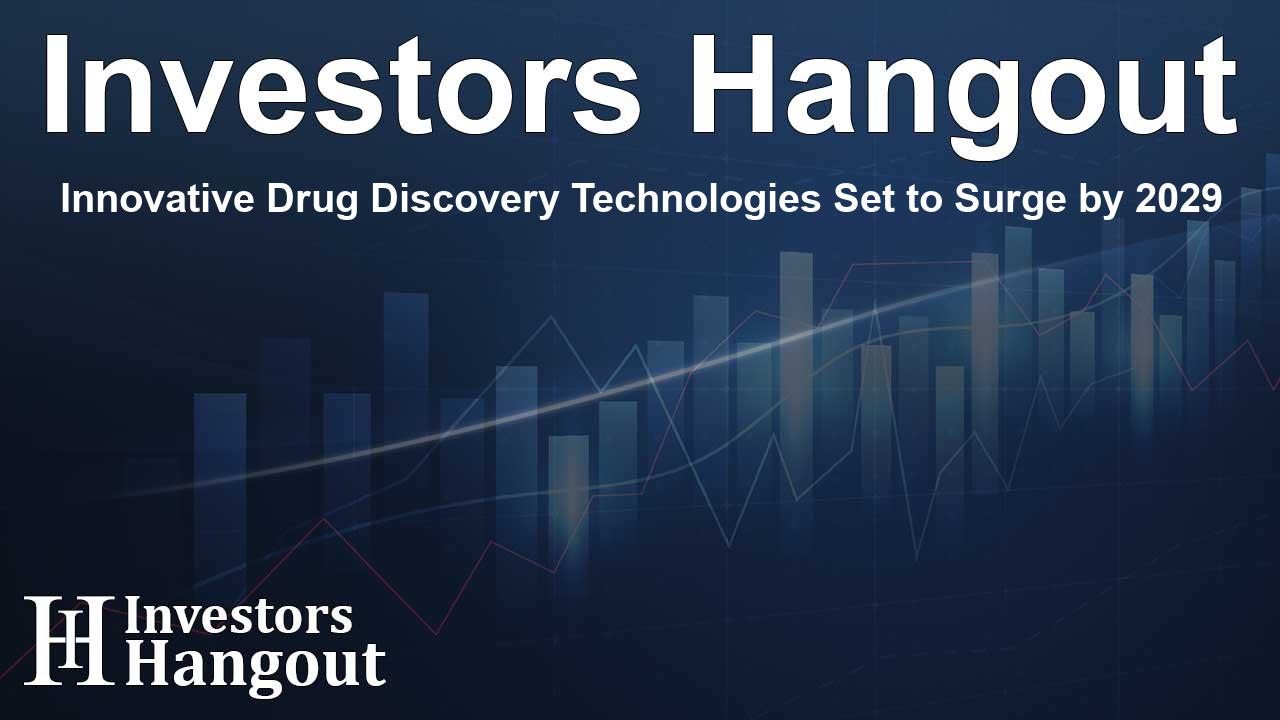Innovative Drug Discovery Technologies Set to Surge by 2029

Revolutionizing Drug Discovery with Advanced Technologies
Recent advancements in drug discovery technologies are setting the stage for a significant transformation in the pharmaceutical landscape. According to a comprehensive study, the market for these technologies is on track to grow from $111.9 billion to an impressive $197 billion by the end of a specified forecast period, signifying a compound annual growth rate (CAGR) of 12%. This robust growth is not just a number; it reflects the increasing need for innovative approaches to drug research and development.
The Role of AI and Genomics
At the forefront of this evolution are artificial intelligence (AI) and genomics, both of which are reshaping how researchers identify and develop new drugs. These technologies enable researchers to analyze vast datasets rapidly, allowing for quicker identification of promising candidates. By utilizing AI's predictive capabilities, researchers can streamline the drug design process, potentially leading to more effective treatments in less time.
Transformative High-Throughput Screening
High-Throughput Screening (HTS) is another pivotal technology in this arena. HTS employs automated processes to test thousands of compounds in a matter of days. This means that instead of painstakingly testing one compound at a time, researchers can evaluate vast libraries of potential drugs simultaneously. This efficiency is crucial in identifying viable candidates early in the drug development process, ultimately shortening development timelines and reducing costs.
Addressing Global Health Needs
The urgency for innovative drug discovery solutions has never been greater. With the rise of chronic and infectious diseases, as well as the increasing global elderly population, there is a pressing demand for new medications. Drug discovery technologies possess the potential to meet these needs by accelerating the development of treatments targeted at specific health challenges, thereby improving patient outcomes significantly.
Market Dynamics Driving Growth
Several key factors are contributing to the anticipated growth in the drug discovery technologies market. Firstly, the prevalence of chronic and infectious diseases continues to rise, which heightens the demand for more effective therapies. Moreover, the growing elderly population is driving a need for medications tailored to address age-related health conditions.
Research Funding Fuels Innovations
Another crucial element facilitating growth in this sector is the influx of research funding from public and private entities. Increased financial support enables companies to invest in innovative drug discovery technologies, fostering collaborations that can lead to significant advancements in medical treatments.
Global Advances in Drug Discovery
The drug discovery market is diverse, segmented by technology and application. This includes therapeutic areas like oncology and cardiovascular diseases. The regional analysis highlights the vibrant landscapes in various parts of the world, emphasizing the competitive nature of this sector.
Challenges and Success Rates
Despite the advancements, the drug discovery process is fraught with challenges. Notably, the success rate remains low, with only about 10% of new medications receiving FDA approval. The complexity of human biology presents significant hurdles that researchers must navigate while developing safe and effective therapies.
Key Players in the Market
Numerous leading companies are thriving in this space, including Agilent Technologies Inc., Bio-Rad Laboratories Inc., and Illumina Inc., among others. These organizations are continuously pushing the boundaries of what's possible in drug discovery, utilizing cutting-edge technologies to enhance their product offerings.
Frequently Asked Questions
What is the projected market growth for drug discovery technologies?
The drug discovery technologies market is expected to advance from $111.9 billion in 2024 to about $197 billion by 2029, reflecting a CAGR of 12%.
What technologies are driving this market?
High-Throughput Screening, AI analysis, and advanced genomics are key technologies propelling advancements in drug discovery.
Who are the main contributors to market growth?
The increasing prevalence of chronic diseases, a growing global elderly population, and significant research funding are critical factors driving market expansion.
Which companies lead the industry?
Leading companies in the drug discovery sector include Agilent Technologies, Bio-Rad Laboratories, and Illumina, all contributing to innovative breakthroughs.
How are drug discovery technologies expected to evolve?
With ongoing technological advancements and increasing global health challenges, drug discovery technologies are poised to become more efficient and effective, addressing the needs of patients worldwide.
About Investors Hangout
Investors Hangout is a leading online stock forum for financial discussion and learning, offering a wide range of free tools and resources. It draws in traders of all levels, who exchange market knowledge, investigate trading tactics, and keep an eye on industry developments in real time. Featuring financial articles, stock message boards, quotes, charts, company profiles, and live news updates. Through cooperative learning and a wealth of informational resources, it helps users from novices creating their first portfolios to experts honing their techniques. Join Investors Hangout today: https://investorshangout.com/
Disclaimer: The content of this article is solely for general informational purposes only; it does not represent legal, financial, or investment advice. Investors Hangout does not offer financial advice; the author is not a licensed financial advisor. Consult a qualified advisor before making any financial or investment decisions based on this article. The author's interpretation of publicly available data shapes the opinions presented here; as a result, they should not be taken as advice to purchase, sell, or hold any securities mentioned or any other investments. The author does not guarantee the accuracy, completeness, or timeliness of any material, providing it "as is." Information and market conditions may change; past performance is not indicative of future outcomes. If any of the material offered here is inaccurate, please contact us for corrections.